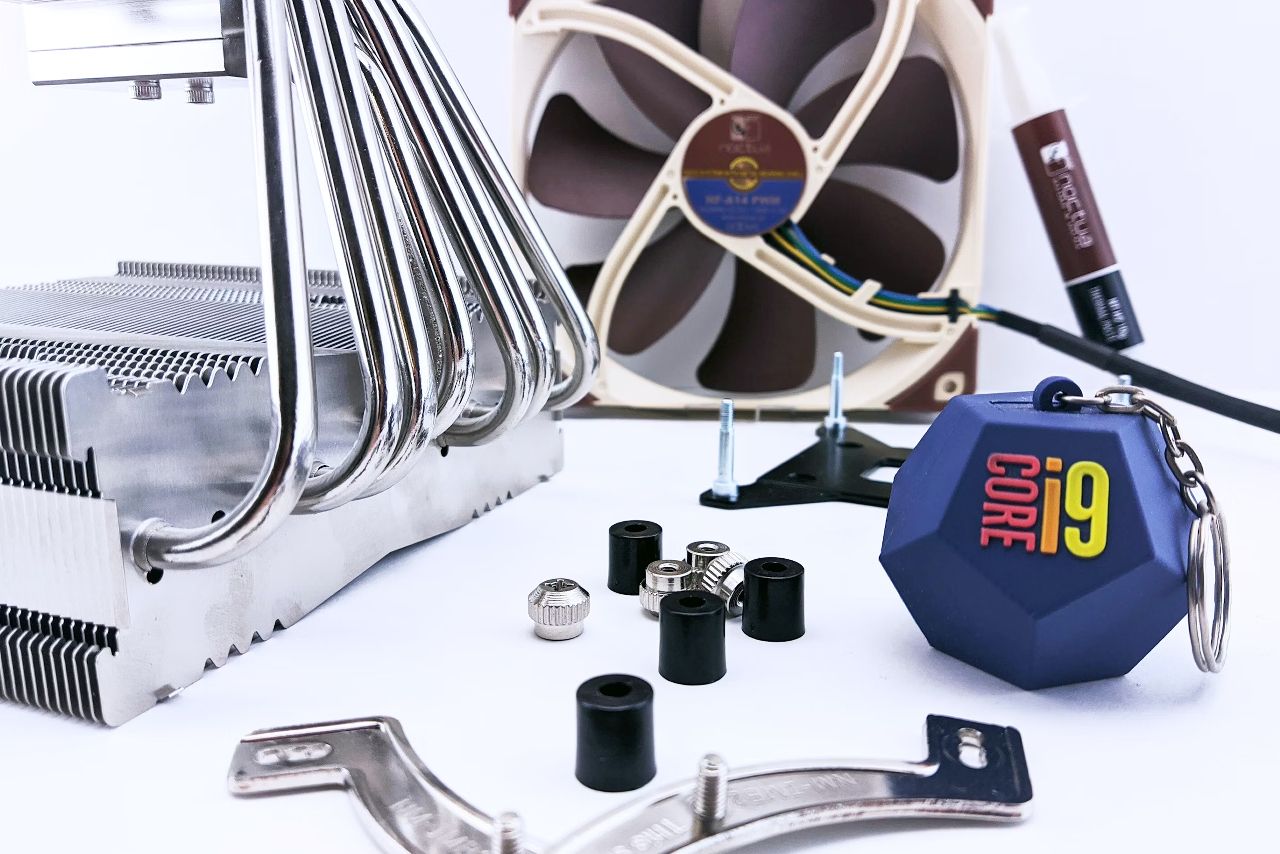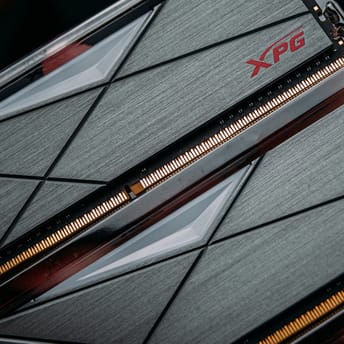
Thermal Design Power Guide: AMD vs Intel, Real Watts and Cooling
In PC hardware and custom builds, thermal design power (TDP) is one of the most important concepts. It appears in Intel and AMD CPU specs and NVIDIA/AMD GPU sheets (often as TGP/TBP), and it’s cited when choosing a cooler or estimating power use. But what does TDP mean? How is it calculated, does it reflect actual power draw, and why do spec numbers sometimes differ from real‑world tests?
TDP indicates the maximum amount of heat a cooler or other cooling system can dissipate to ensure the stable operation of the CPU (or other component) under specific conditions. However, people often mistakenly believe that TDP is directly equivalent to the power consumption of a CPU or GPU. In reality, everything is a little more complicated because each company (Intel, AMD, and graphics card manufacturers) has its own method for calculating TDP. Additionally, modern CPUs can dynamically adjust their frequencies and voltages, which sometimes results in significant spikes in energy consumption.
The purpose of this article is to understand in detail the nature of TDP (using CPU as the primary example), to show why this concept cannot be taken simplistically, and to explain how this indicator comes into contact with the real world (PC assemblies, cooling systems, overclocking, and component selection). We will also examine the marketing nuances, why the TDP may differ from the actual power consumption of the CPU under load, and what this means for users building or upgrading a PC.
What is TDP?
Thermal design power is a value that indicates the amount of thermal energy a component can dissipate when operating in its design (nominal) mode. For those wondering about the TDP meaning in CPU, it reflects the amount of heat that must be dissipated to maintain stable performance. In other words, the manufacturer states that for this chip to operate stably and prevent overheating, the cooling system must be able to dissipate at least X watts of heat.
Why is this indicator important? First, it provides guidance to manufacturers of motherboards, laptops, and off-the-shelf systems. If the CPU TDP equals 65 watts, then under normal load, it is expected that the cooling system should be able to cope with the 65 watts of heat generated. Secondly, users who assemble PCs manually gain an initial idea of the type of cooler they need. Of course, a 125-watt cooler is potentially safe for a CPU that draws 65 watts, but if you use a cooling system that is too weak, there is a high probability of throttling (the automatic slowing of the CPU to avoid thermal damage).
It is essential to understand that TDP is not a fixed upper limit of consumption. Instead, it is the average heat dissipation achieved under specific load scenarios, as determined by the manufacturer. TDP is often confused with real power consumption. Still, in practice, everything depends on several factors, including the current frequency, voltage, and the operation of boost algorithms (such as Intel Turbo Boost and AMD Precision Boost), as well as the overall thermal and electrical budget of the PC.
How TDP Is Calculated (Intel vs AMD CPUs)
The methodology for determining TDP is not universal; Intel and AMD have their approaches, which, although superficially similar, can produce different results. If we compare processors with the same formal TDP (say, 65 watts) from both manufacturers, in reality, one CPU can consume 70 watts under full load, while the other consumes 95 watts. This discrepancy still corresponds to their officially declared TDP.
TDP in Intel CPUs
Intel specifies a basic TDP indicator, which often corresponds to the power consumption at the base clock frequency (that is, without taking into account Turbo Boost). When the turbo mode is enabled, the processor can briefly surge in consumption to the PL2 level—this is the so-called Power Limit 2, which can exceed the nominal TDP by 20-30% (and in some cases, even more).
As a result, we end up with a situation where the official TDP number, for example, is 65 watts, but the actual peak power can reach 120-150 watts with Turbo Boost. In the 12th generation and above, Intel replaced TDP terminology with Processor Base Power. Recent generations have more complex PL1/PL2/PL4 limits. The Base TDP assumes all cores are at the base clock, which rarely occurs in real-world use.
TDP in AMD CPUs
AMD specifies the TDP in a range (for example, 65W to 105W). Still, modern models feature Precision Boost and PBO (Precision Boost Overdrive) mechanisms that enable the processor to reach higher voltage and frequency values dynamically. Peak power consumption can also exceed the rated TDP if the motherboard (VRM module, BIOS) and cooling allow you to work without overheating. AMD’s calculation is closer to the sustained load, not the base clock, like Intel.
To summarize, each company calculates TDP as it sees fit for its usage models. At the same time, TDP does not necessarily reflect the actual peak CPU usage figures.
TDP and Power Consumption
One of the most common myths is that the TDP is equivalent to the processor’s power consumption from an outlet or power supply. In fact, in games, benchmarks, or rendering, the processor can temporarily exceed its nominal TDP. Conversely, with a light workload, the processor will operate much more efficiently, reducing its frequencies and voltages.
For example, Intel Core i7 or i9 processors can have a nominal TDP of 65 watts or 125 watts, but in stress tests (such as Prime95 or Cinebench R23), the actual power consumption often exceeds 150-200 watts. This is because boost algorithms do not limit the instantaneous power supply in the first few seconds or even minutes after the load is applied. The motherboard enables the CPU to operate until it reaches either the temperature limit or the power limit (PL2).
TDP and CPU undervolting
The concept of undervolting (reducing core voltage) and special modes, such as AMD Eco Mode, demonstrates the flexibility of TDP. If you lower the voltage or activate Eco Mode, the processor consumes less power, and it can be assumed that its effective TDP is reduced. This proves that TDP is a somewhat arbitrary value tied to the basic factory settings.
How TDP Affects CPU Cooling
Many users consult the CPU’s TDP to determine how powerful a cooler should be. In general, this is the correct logic; an air cooler or a water cooling system should have at least the same or greater dissipation capacity as a TDP.
CPU air cooling
Several parameters classify air coolers. Manufacturers often indicate the approximate value of the cooler’s TDP compatibility, such as 95 watts, 150 watts, or even 250 watts or more. Of course, these are simplified guidelines, but they help to match the cooler with the processor.
For example, if you have a CPU with a claimed TDP of 65 watts, then a cooler designed for +-100 watts is usually enough to keep the temperature within acceptable limits. However, if numerous rendering or similar CPU-intensive tasks are planned, it is advisable to consider selecting a model with a higher margin.
CPU liquid cooling
Closed-loop (AIO) and custom-built LCS are supposed to dissipate heat more efficiently. A large-area radiator (240 mm, 360 mm, etc.) is more effective in maintaining temperature under a workload. However, it is essential to remember that the heat is eventually dissipated into the air inside the case, so high-quality ventilation of the PC case is also necessary.
It is often chosen for top-end CPU models with a TDP of 125-150 watts or higher (in the case of HEDT platforms). Even a small 120 or 140 mm AIO can handle a TDP of 95-125 watts, but for demanding tasks, it is more reliable to opt for a 240/280/360 mm radiator to ensure a sufficient cooling margin.
Even the most expensive cooling system will not perform at its best if it is not installed correctly or if the thermal paste is distributed unevenly (gaps, excess, uneven layer). The uniform contact of the cooler sole with the CPU cover is crucial for maintaining a stable temperature. And this is directly related to how the actual heat from the processor is transferred to the radiator.
How TDP Works in Laptops and Mobiles
Laptops have their own special rules. Here, we use other TDP values, such as 15W, 25W, 35W, 45W, and so on, which are commonly used. But it is much more difficult to dissipate heat in a thin case.
Ultrabooks
Many ultrabooks are equipped with 15-watt chips that can be boosted to 25 watts or even 30 watts in a short period. But the ultrabook’s case is so compact that the cooling system (thin heat pipes, small fans) cannot dissipate heat as efficiently. The result is that the processor runs at higher frequencies for a while, then heats up and throttles.
Gaming laptops
Gaming and workstation laptops can have processors with a 45-watt TDP and a video card that also contributes to heat generation (often another 80-150 watts). Here, manufacturers install more massive cooling systems (two fans, a thicker case) to dissipate a total of 150-200 watts of heat.
Dynamic power management
Dynamic voltage and frequency scaling (DVFS) technology is critical in mobile platforms, where the CPU or system dynamically adjusts voltage and clock frequency for specific tasks. This is the flexibility of TDP in action—if the CPU determines that it has exceeded its thermal and electrical limits, it resets the frequencies. This is the difference between the rated power and how the device behaves in real life.
How TDP Impacts Overclocking
When it comes to overclocking, the actual TDP value can rise significantly above the factory statements. Overclocking involves increasing the multiplier (frequency) and often the voltage across the cores. Any increase in voltage leads to a disproportionately greater increase in heat generation.
CPU overclocking
During manual overclocking, the user manually sets the voltage and frequency values. If you take a processor with a 95-watt TDP, then with aggressive overclocking, it can consume 140-160 watts (or even more). Therefore, not only must the cooler have a reserve, but also the motherboard with a robust power subsystem (VRM) capable of providing stable voltage.
Automatic boost technologies
Intel’s Turbo Boost, AMD’s Precision Boost, and PBO are types of built-in automatic mechanisms similar to overclocking (but they are not overclocking). They can already exceed the basic TDP level in regular operation if the temperature and power consumption allow. For example, Intel MultiCore Enhancement (MCE), a BIOS setting on some boards, often removes all limits and allows the processor to operate at a higher frequency for longer than specified by official specifications. In this case, the TDP on paper remains the same, but in fact, we get a much higher heat dissipation.
Overclocking risks
The higher the actual heat output, the more likely it is to overheat if the cooling system fails. The load on the motherboard’s VRM is also increasing. And, of course, energy consumption is rising, which can affect electricity bills and system noise (fans will spin up more).
TDP in PC Assembly
When assembling a new PC, it is essential to carefully correlate all the components, including the CPU, GPU, PSU, motherboard, cooler, and more. The TDP of the processor is just one element of the system.
PSU selection
If you have a TDP of a processor of 65 watts and a video card of 150 watts, then theoretically, there is enough power supply for 215 watts with a small margin. In practice, it is recommended to use a PSU with at least a 600-watt capacity and 80 PLUS certification (Bronze, Gold, etc.), ensuring sufficient power margin. After all, peak consumption may be higher, and besides, the power supply unit should not be constantly loaded at 100% of its nominal value.
PC case and ventilation
Even if you have a high-quality cooler for the processor, hot air should still be discharged from the case. Poor ventilation allows heat to accumulate inside, reducing the cooler’s efficiency. Therefore, a competent organization of airflows is necessary.
Cooling reserve
Ideally, always take a cooler that is slightly more powerful than the formal TDP of the processor. This provides the following advantages:
- Less noise (the cooler runs at a lower RPM).
- The temperature is better maintained during surges.
- Reserve for the future.
TDP Numbers vs Reality
It’s no secret that manufacturers benefit from specifying attractive numbers in the specifications. There is a specific marketing game associated with TDP. The buyer, seeing only 65 watts, may think that the CPU will be cold and that the PSU will require a minimum of power. However, in real-world review tests, it often turns out that the processor exceeded the rated TDP during long workloads.
Underestimation or optimistic calculation
Manufacturers can select a specific test scenario in which the processor does not achieve maximum boost for an extended period. Thus, the average heat dissipation value remains within the TDP. As soon as the user launches either Blender or Prime95 in conditional mode, the situation changes.
Reviews and independent tests
To accurately understand how many watts a particular CPU consumes, it’s best to consult independent tests. Specialized resources measure the system’s power consumption during idle time, under load, and in short- and long-term stress tests. Direct experiments are often carried out, recording both the temperature and the consumption from the outlet (with a certain efficiency of the power supply).
Long-term stress tests
Sometimes you can see that the processor consumes high power only in the first 1-2 minutes, and then drops to a more modest level. These are the turbo timers (Intel’s PL2 time). If the load lasts longer in real-world work tasks, such as video rendering, the processor will inevitably reduce frequencies, reaching a more modest level of heat dissipation.
TDP and Next-Gen CPUs
As processors become increasingly multicore, the concept of TDP is evolving. New technological processes (5 nm, 4 nm, 3 nm) are also affecting, allowing more transistors to be placed and frequencies to be raised while maintaining the same crystal area.
In the future, processors can be expected to manage their heat packs more intelligently, predicting loads in advance and optimizing temperature accordingly. We may see more precise figures in the specifications, but the concept of TDP will remain a conditional guideline, not a strict number.
FAQ
What does TDP stand for?
TDP stands for thermal design power—the amount of heat a CPU or other PC part is expected to generate under a standard workload.
What is TDP in a CPU?
TDP (Thermal Design Power) refers to the amount of heat the processor produces and the amount of cooling it requires to run safely.
Does TDP equal power consumption?
No. TDP is about heat, not exact power draw. Actual CPU power usage can exceed TDP, especially under boost.
Is TDP important when choosing a cooler?
Yes. TDP helps match the CPU with a cooler that can handle the heat output without thermal throttling.
Importance of TDP: Summary
TDP is one of the key, yet often misunderstood, parameters when choosing or operating a CPU or GPU. It indicates the amount of heat the cooling system will have to dissipate in the nominal mode. But today’s realities of computer technology, with their dynamic frequencies and power consumption, make TDP only a guideline that can be significantly exceeded in short-term or specific loads.
The primary practical conclusion for the user is that the TDP limit should not be viewed as a strict limit on consumption. It is better to have a reserve for cooling and power supply so that the system remains stable and quiet. If you plan to overclock, it is worth remembering that the cooling and power requirements can increase significantly.
The growing trend towards hybrid architectures, a growing number of cores, and increasingly subtle technical processes indicate that the concept of TDP will only become more complex. Always keep in mind that TDP is only one part of the puzzle, and check the results of independent reviews and tests, which indicate the actual power consumption and heat dissipation. Also, look at complete PC rigs instead of individual parts. This approach will allow you to build or buy a system that optimally meets your needs.













